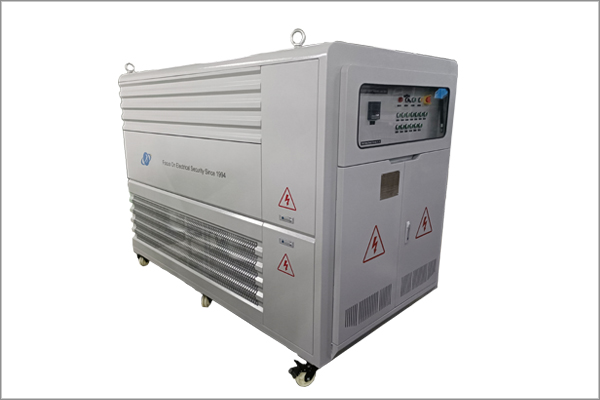Main Functions of Generator Resistive Inductive Load Bank
Time:2024-08-07
The generator resistive inductive load bank is a crucial tool for ensuring the stable operation of generators in actual usage scenarios. It simulates various load conditions to evaluate the performance, stability, and response capabilities of generator sets. The following are the primary functions of a generator resistive inductive load bank:
1. Verifying Generator Performance
The primary task of load testing is to verify the generator's performance. By applying different levels of load, key indicators such as output power, voltage stability, and frequency stability under various load conditions can be detected. These indicators are directly related to whether the generator can meet actual power demands, ensuring stable operation across various operating conditions.
2. Testing Stability and Reliability
The stability of a generator under different loads is a critical factor in assessing its performance. The resistive inductive load bank can gradually increase the load to observe whether the generator's output power and voltage remain stable under varying loads. This helps evaluate the generator's stability and reliability, ensuring it maintains a stable output in complex and varied load environments.
3. Assessing Response Capability
The response capability of a generator refers to its ability to adjust output power quickly and stably in response to load changes. During load testing, sudden load changes can be applied to observe the generator's output response. This assesses the generator's adaptability to load variations, ensuring it can rapidly and stably adjust its output power to meet load demands in practical applications.
4. Detecting Faults and Issues
Load testing is also an essential means of detecting potential faults and issues in generators. During testing, any abnormal noises, vibrations, or voltage fluctuations can be observed as the generator responds to load changes. These may indicate internal faults or design flaws, and timely detection and repair can prevent failures and damages during actual operation.
5. Determining Maximum Load Capacity
The maximum load capacity of a generator set is crucial to ensuring safe and stable operation. The resistive inductive load bank can gradually increase the load until the generator reaches its maximum capacity. This helps determine the generator's load distribution and usage plan, ensuring it does not overload and suffer damage during operation.
6. Intelligent Testing and Data Analysis
Modern resistive inductive load bank equipment often features intelligent testing and data analysis capabilities. For instance, 400Hz medium-frequency RLC-type resistive-inductive-capacitive load banks can adjust power factors positively and negatively, achieve a loading accuracy of up to 0.01kW, and offer functions such as harmonic analysis and energy accumulation. These devices can work with upper computers to automatically measure all electrical parameters of the generator, generating charts, curves, and inspection reports. This enhances testing efficiency and accuracy, making data analysis more convenient and intuitive.
7. Safety Assurance
Safety measures are vital during generator resistive inductive load bank testing. The testing environment should comply with safety standards to prevent dangers such as electric shocks and fires. Additionally, the application and unloading speeds of loads should be strictly controlled to avoid excessive shocks and damages to the generator.
Conclusion
The generator resistive inductive load bank is a critical tool for ensuring stable generator operation in actual usage scenarios. By simulating various load conditions to evaluate the generator's performance, stability, and response capabilities, potential issues can be promptly identified and resolved, enhancing the generator's reliability and durability. Furthermore, the application of intelligent testing equipment and data analysis methods makes the testing process more efficient and accurate. Therefore, regular resistive inductive load bank testing should be conducted during generator operation and maintenance to ensure its normal operation and stable performance.
News Recommendation
-
 2024-09-11
2024-09-11TRIUMPH LOAD EXHIBITING AT Enlit Europe 2024 -BOOTH 7.H08
-
 2023-04-21
2023-04-21TRIUMPH LOAD EXHIBITING AT DATA CENTER WORLD GERMANY 2023-BOOTH F909
-
 2023-04-06
2023-04-06TRIUMPH LOAD EXHIBITING AT ELECTRIC POWER TECH KOREA 2023 – Booth G109
-
 2022-05-05
2022-05-05What is the role of ac load bank for power supply?
-
 2022-05-05
2022-05-05What is the role of the load bank?


